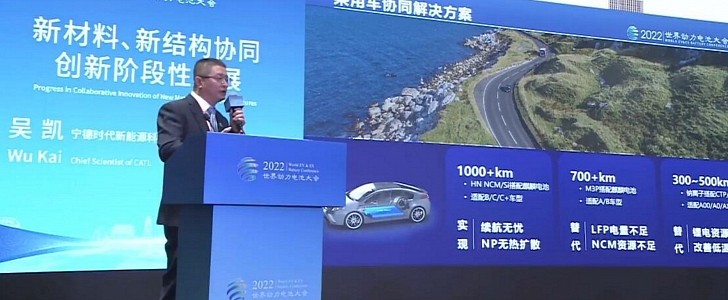There are few known things about the CATL’s M3P batteries, but Chinese media writes that they will soon power a new version of the Tesla Model 3 built in China. According to the reports, the new batteries will allow for more range while being cheaper and more durable.
The elusive M3P batteries that CATL is working on are said to be an improved version of the LFP chemistry. Sometimes confused with the LMFP type, which adds manganese to the formula, the M3P battery is still a lithium phosphate battery. The main difference is the substitution of iron with a mix of materials that include magnesium, zinc, and aluminum. This increases the battery’s energy density while keeping the costs in check. It is not quite at the NCM/NCA level, but it should allow a better range than LFP variants while retaining their advantages.
The commercial launch of the M3P batteries was expected for next year, and now we know that CATL will supply the M3P batteries to Tesla starting in the fourth quarter of this year. The first Model Y and Model 3 cars featuring M3P batteries will get to customers early next year. Official data shows that the energy density of these batteries will be about 15% higher than that of the LFP types, which hovers around 210 kWh/kg. This should translate into a 10% range improvement over the current LFP-powered cars built at Giga Shanghai, according to Sina Tech.
Currently, the Tesla Model 3 assembled at Giga Shanghai is powered by LFP batteries sourced from CATL. According to the Chinese standard CLTC, they offer a comprehensive operating range between 556 km and 675 km (345-420 miles). With the new M3P batteries, a Tesla Model 3 should be able to travel more than 700 km (435 miles) on one charge, in line with CATL promises. The CLTC standard is less realistic than the U.S. EPA estimates.
Although Tesla relies on CATL to supply LFP batteries for its Shanghai gigafactory, it has partnered with BYD for the LFP batteries used at Giga Berlin. Those offer a smaller capacity (55 kWh vs. 60 kWh) and range (around 440 km/273 miles). Unlike CATL’s M3P and LFP batteries, the BYD offering is a structural pack that is a better fit for Tesla’s plans at Giga Berlin.
The commercial launch of the M3P batteries was expected for next year, and now we know that CATL will supply the M3P batteries to Tesla starting in the fourth quarter of this year. The first Model Y and Model 3 cars featuring M3P batteries will get to customers early next year. Official data shows that the energy density of these batteries will be about 15% higher than that of the LFP types, which hovers around 210 kWh/kg. This should translate into a 10% range improvement over the current LFP-powered cars built at Giga Shanghai, according to Sina Tech.
Currently, the Tesla Model 3 assembled at Giga Shanghai is powered by LFP batteries sourced from CATL. According to the Chinese standard CLTC, they offer a comprehensive operating range between 556 km and 675 km (345-420 miles). With the new M3P batteries, a Tesla Model 3 should be able to travel more than 700 km (435 miles) on one charge, in line with CATL promises. The CLTC standard is less realistic than the U.S. EPA estimates.
Although Tesla relies on CATL to supply LFP batteries for its Shanghai gigafactory, it has partnered with BYD for the LFP batteries used at Giga Berlin. Those offer a smaller capacity (55 kWh vs. 60 kWh) and range (around 440 km/273 miles). Unlike CATL’s M3P and LFP batteries, the BYD offering is a structural pack that is a better fit for Tesla’s plans at Giga Berlin.






